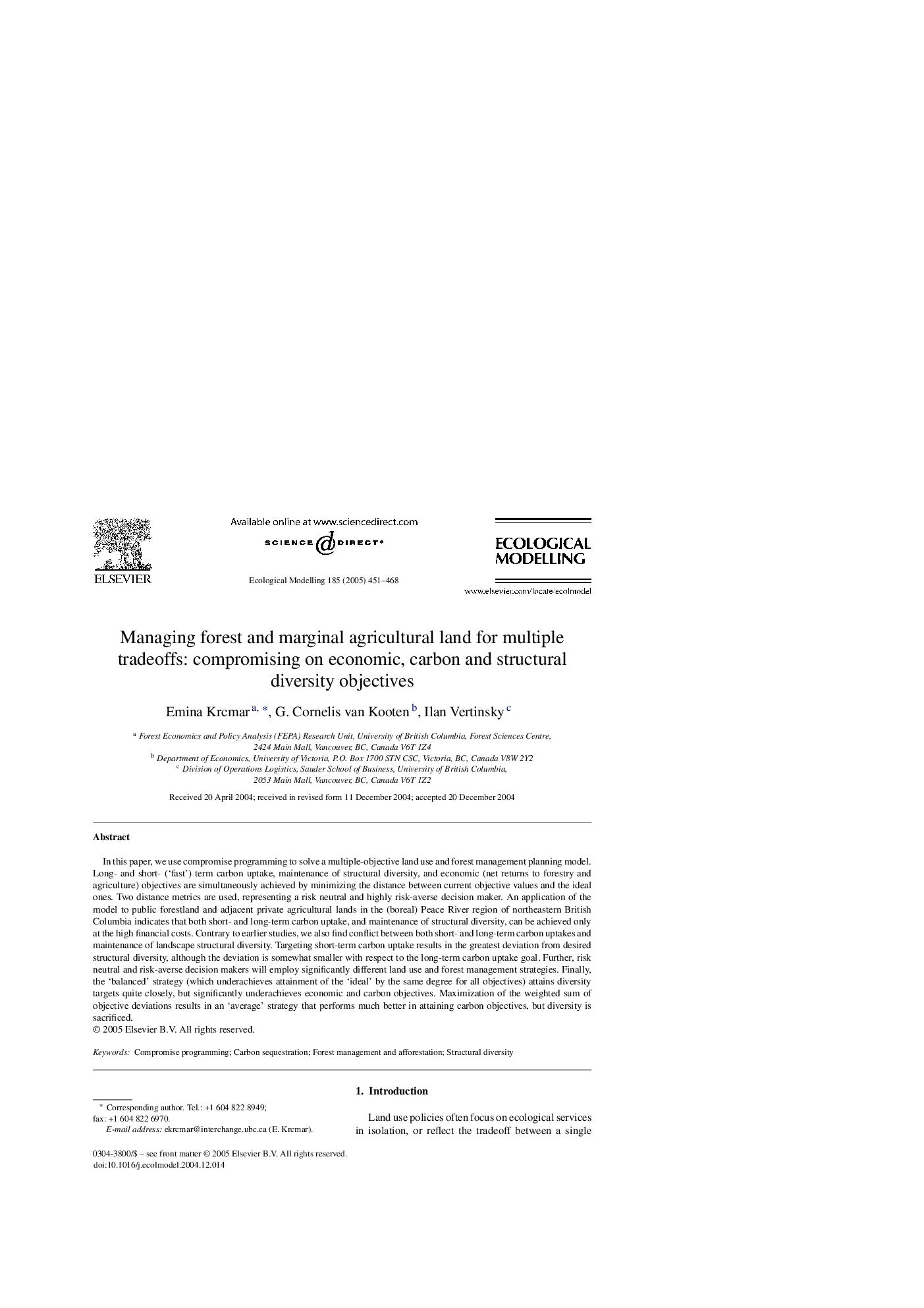| کد مقاله | کد نشریه | سال انتشار | مقاله انگلیسی | نسخه تمام متن |
|---|---|---|---|---|
| 9443399 | 1617577 | 2005 | 18 صفحه PDF | دانلود رایگان |
عنوان انگلیسی مقاله ISI
Managing forest and marginal agricultural land for multiple tradeoffs: compromising on economic, carbon and structural diversity objectives
دانلود مقاله + سفارش ترجمه
دانلود مقاله ISI انگلیسی
رایگان برای ایرانیان
کلمات کلیدی
موضوعات مرتبط
علوم زیستی و بیوفناوری
علوم کشاورزی و بیولوژیک
بوم شناسی، تکامل، رفتار و سامانه شناسی
پیش نمایش صفحه اول مقاله

چکیده انگلیسی
In this paper, we use compromise programming to solve a multiple-objective land use and forest management planning model. Long- and short- ('fast') term carbon uptake, maintenance of structural diversity, and economic (net returns to forestry and agriculture) objectives are simultaneously achieved by minimizing the distance between current objective values and the ideal ones. Two distance metrics are used, representing a risk neutral and highly risk-averse decision maker. An application of the model to public forestland and adjacent private agricultural lands in the (boreal) Peace River region of northeastern British Columbia indicates that both short- and long-term carbon uptake, and maintenance of structural diversity, can be achieved only at the high financial costs. Contrary to earlier studies, we also find conflict between both short- and long-term carbon uptakes and maintenance of landscape structural diversity. Targeting short-term carbon uptake results in the greatest deviation from desired structural diversity, although the deviation is somewhat smaller with respect to the long-term carbon uptake goal. Further, risk neutral and risk-averse decision makers will employ significantly different land use and forest management strategies. Finally, the 'balanced' strategy (which underachieves attainment of the 'ideal' by the same degree for all objectives) attains diversity targets quite closely, but significantly underachieves economic and carbon objectives. Maximization of the weighted sum of objective deviations results in an 'average' strategy that performs much better in attaining carbon objectives, but diversity is sacrificed.
ناشر
Database: Elsevier - ScienceDirect (ساینس دایرکت)
Journal: Ecological Modelling - Volume 185, Issues 2â4, 10 July 2005, Pages 451-468
Journal: Ecological Modelling - Volume 185, Issues 2â4, 10 July 2005, Pages 451-468
نویسندگان
Emina Krcmar, G. Cornelis van Kooten, Ilan Vertinsky,